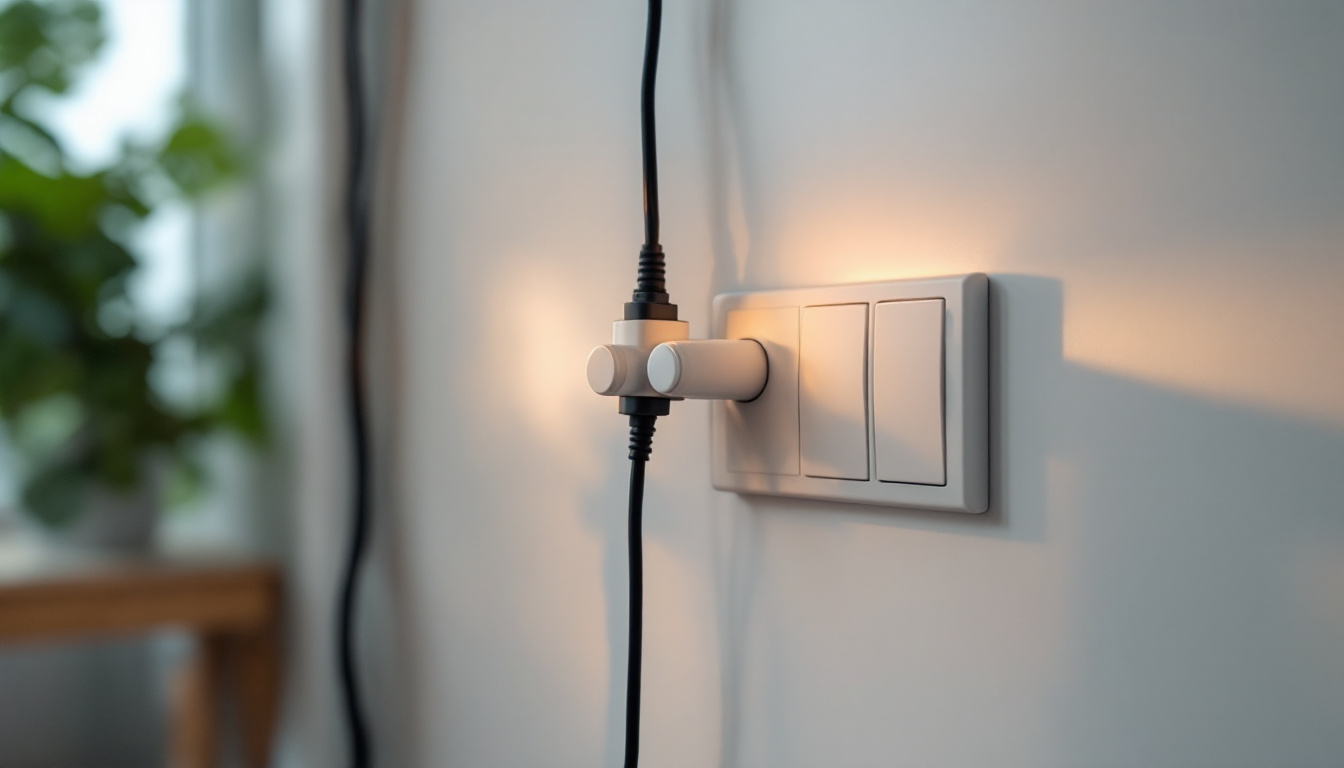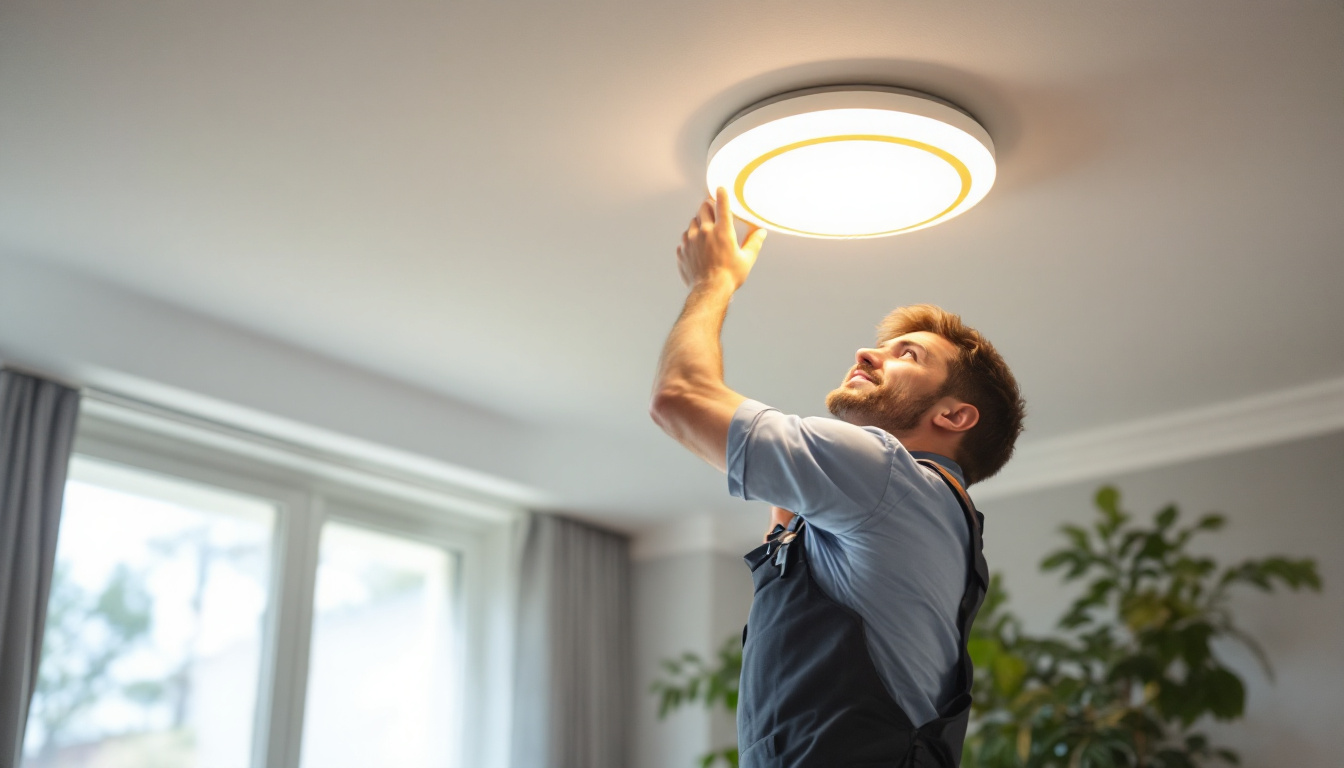
In the world of electrical installations, understanding the intricacies of three-way light switches is essential for lighting contractors. These switches allow for versatile lighting control in various settings, enhancing both functionality and convenience. This article delves into the fundamental aspects of three-way light switches, offering insights that every lighting contractor should know.
A three-way light switch is designed to control a single light fixture from two different locations. This feature is particularly useful in larger spaces, such as hallways, staircases, and open-concept areas, where accessing a light switch from multiple points is necessary. The wiring configuration and functionality of these switches differ significantly from standard single-pole switches.
The basic operation of a three-way switch involves two switches that work in tandem to control the same light fixture. When one switch is toggled, it changes the state of the light, either turning it on or off, while the other switch can do the same from a different location. This creates a seamless experience for users, allowing them to control lighting without having to walk back to the original switch. This functionality not only enhances convenience but also improves safety, especially in areas where visibility is crucial, such as staircases or dark hallways.
Understanding the wiring configuration is crucial for proper installation. A three-way switch setup typically involves three wires: the common wire, and two traveler wires. The common wire connects to the light fixture, while the traveler wires connect the two switches. It’s essential to ensure that the wiring is done correctly to avoid any electrical issues or hazards. Additionally, it is important to note that the color coding of these wires can vary based on local electrical codes, so consulting with a professional or referring to a wiring diagram is advisable for those unfamiliar with electrical work.
There are several types of three-way switches available, including traditional mechanical switches and modern smart switches. Mechanical switches are the most common and are typically used in residential applications. Smart switches, on the other hand, offer advanced features such as remote control via smartphone apps and integration with home automation systems. Understanding the differences between these types can help contractors recommend the best options for their clients. Furthermore, smart switches often come with energy monitoring capabilities, allowing homeowners to track their energy usage and make informed decisions about their lighting, which can lead to cost savings over time.
When installing three-way switches, there are several considerations to keep in mind. First, the placement of the switches should be strategic to maximize convenience; for example, placing one switch at the top of a staircase and another at the bottom ensures easy access. Additionally, it’s important to consider the type of lighting being controlled. Some fixtures may require specific types of switches, especially if they are dimmable or part of a larger lighting system. Moreover, ensuring that the switches are rated for the appropriate voltage and amperage is critical to prevent overheating and potential fire hazards.
Despite their convenience, three-way switches can sometimes present challenges. Common issues include flickering lights, which may indicate a loose connection or faulty switch, and one switch not controlling the light as expected. Troubleshooting these problems typically involves checking the wiring connections and ensuring that the switches are functioning properly. In some cases, replacing one of the switches may be necessary. For those who are not comfortable working with electrical systems, it is advisable to consult a licensed electrician to ensure safety and compliance with local codes.
The installation of three-way light switches requires careful planning and execution. A successful installation not only ensures functionality but also adheres to safety standards. Below are the key steps that lighting contractors should follow during the installation process.
Before beginning the installation, it’s crucial to plan the layout carefully. Identify the locations of the switches and the light fixture. Consider factors such as accessibility, aesthetics, and the overall design of the space. Proper planning will help in determining the length of the wiring needed and the best route for installation. Additionally, it’s beneficial to visualize how the switches will be used in daily life. For instance, placing a switch at the top and bottom of a staircase can enhance safety and convenience, allowing users to control the lighting without having to navigate in the dark.
Having the right tools and materials is essential for a smooth installation process. Common tools required include a voltage tester, wire stripper, screwdriver, and electrical tape. Additionally, ensure that the appropriate type of three-way switches and wiring are available. Using high-quality materials can significantly enhance the durability and safety of the installation. It’s also wise to have a flashlight on hand, especially if you are working in dimly lit areas. This can help illuminate your workspace and prevent any accidental mishaps. Furthermore, consider wearing safety goggles and gloves to protect yourself from any potential hazards during the installation.
1. **Turn Off Power:** Always start by turning off the power at the circuit breaker to prevent any electrical shock during installation.
2. **Install the First Switch:** Connect the common wire to the common terminal of the first switch, and attach the traveler wires to the corresponding traveler terminals.
3. **Run Wiring to the Second Switch:** Use the appropriate gauge wire to run from the first switch to the second switch location. Ensure that the wiring is secured and protected according to local codes.
4. **Connect the Second Switch:** At the second switch, connect the common wire to the common terminal and the traveler wires to their respective terminals.
5. **Connect the Light Fixture:** Finally, connect the common wire from the second switch to the light fixture, ensuring all connections are secure and insulated.
6. **Test the Installation:** Once everything is connected, turn the power back on and test the switches to ensure they function correctly. If the switches do not operate as expected, double-check all connections and wiring to troubleshoot any issues. It’s also advisable to label the switches clearly, especially in multi-switch configurations, to enhance usability for anyone unfamiliar with the setup.
While installing three-way light switches, contractors may encounter various challenges. Being aware of these potential issues and knowing how to address them can save time and ensure a successful installation.
One of the most common challenges is dealing with incorrect wiring. If the switches do not operate as intended, it may be due to improper connections. To resolve this, double-check the wiring against the installation diagram and ensure that each wire is connected to the correct terminal.
When installing smart three-way switches, compatibility with existing wiring and other smart devices can be a concern. It’s essential to read the manufacturer’s specifications and ensure that the existing electrical system can support the new technology. In some cases, additional components like a neutral wire may be required for proper operation.
In some installations, physical space may limit the placement of switches. If the desired locations are not feasible, consider alternative solutions, such as wireless remote switches or motion sensors, which can provide similar functionality without the need for extensive wiring.
Safety should always be a top priority when working with electrical installations. Understanding the safety standards and regulations is vital for ensuring a safe working environment.
Each region has specific electrical codes that must be followed during installations. Familiarize yourself with these codes to ensure compliance. This includes proper wire sizing, grounding practices, and the use of appropriate materials. Non-compliance can lead to safety hazards and legal issues.
When working on electrical installations, wearing the appropriate personal protective equipment is crucial. This may include gloves, safety goggles, and insulated tools. PPE helps minimize the risk of injury from electrical shocks or accidents during installation.
After installation, conducting thorough testing and inspection is essential. Use a voltage tester to check for proper voltage levels and ensure that all connections are secure. If any issues are detected, address them immediately to prevent future problems.
Three-way light switches offer numerous benefits that enhance both functionality and convenience in various settings. Understanding these advantages can help contractors better communicate the value of these installations to clients.
One of the primary benefits of three-way switches is increased accessibility. By allowing control of lighting from multiple locations, they provide greater convenience in larger spaces. This is especially beneficial in homes with multiple levels, where navigating stairs in the dark can be hazardous.
Three-way switches can contribute to energy efficiency by allowing users to turn off lights from multiple points. This reduces the likelihood of leaving lights on when they are not needed, ultimately leading to lower energy consumption and costs.
Incorporating three-way switches into a lighting design can also enhance the overall aesthetics of a space. By strategically placing switches, contractors can create a more streamlined and visually appealing environment. Additionally, the option to install smart switches can add a modern touch to any home.
Three-way light switches are an essential component of modern electrical installations, providing convenience, safety, and energy efficiency. For lighting contractors, understanding the functionality, installation process, and potential challenges associated with these switches is crucial for delivering high-quality service to clients.
By staying informed about the latest technologies and safety standards, contractors can ensure successful installations that meet the needs of their clients while adhering to regulatory requirements. As the demand for versatile lighting solutions continues to grow, mastering the intricacies of three-way light switches will undoubtedly enhance a contractor’s skill set and reputation in the industry.
Ready to elevate your lighting installations with top-quality three-way switches? Look no further than LumenWholesale, where we provide contractors with spec-grade lighting products at unbeatable wholesale prices. Our selection of switches meets the highest industry standards, ensuring your projects shine with reliability and performance. Plus, with free shipping on bulk orders, you can stock up on the best lighting solutions without the worry of hidden fees. Don’t compromise on quality or value—Wholesale Lighting at the Best Value is just a click away. Make the smart switch to LumenWholesale today!

Discover how choosing affordable vanity lights can streamline projects for lighting contractors, saving both time and money without compromising on style or quality.

Discover how to enhance profitability in lighting installations by understanding the cost-effectiveness of LED lights.

Discover the essential insights every lighting contractor needs to know about shop lights.

Discover how lighting contractors can enhance their business profitability with our comprehensive guide on recessed LED light replacements.